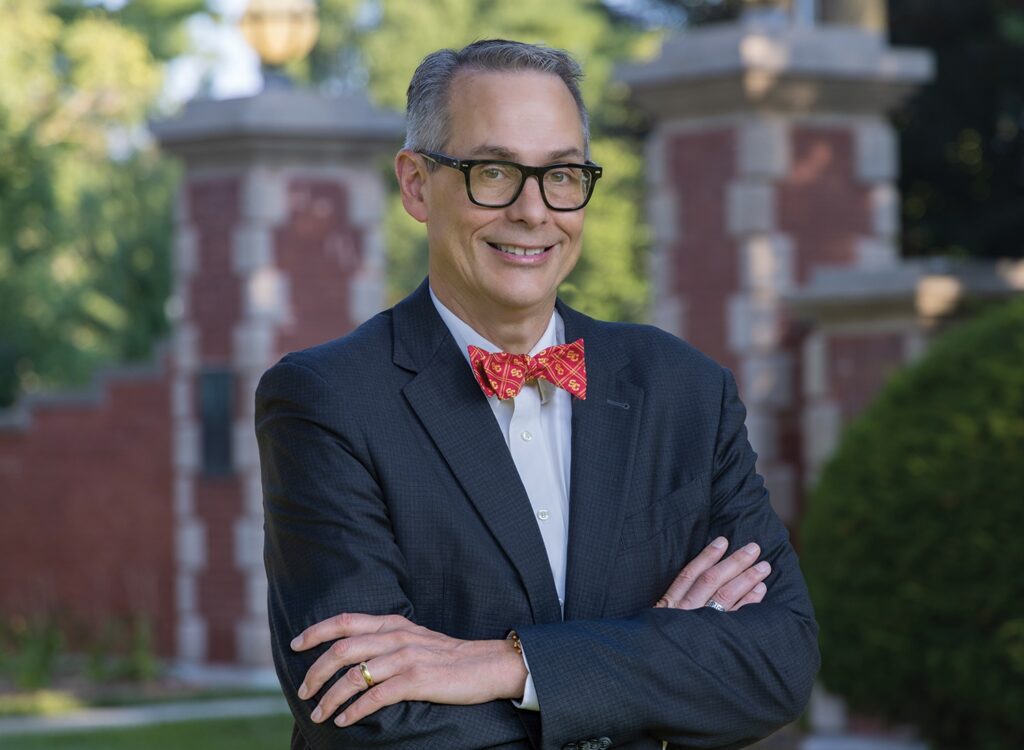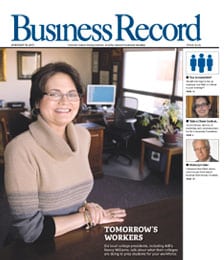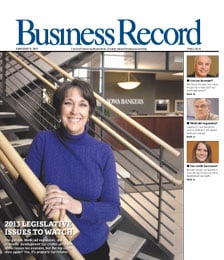Education borrowers locking in rock-bottom rates

Each quarter, Iowa Student Loan Liquidity Corp. faithfully sent an updated statement to Des Moines University student Melanie Giesler, detailing exactly how much she would owe after graduation.
So it’s no surprise that when she received a letter from the non-profit organization explaining how she could consolidate her loans and reduce her monthly payment substantially, “I was all over that,” said Giesler, who graduated in May.
Regardless of whether they’ve just graduated or have been out of school for years, borrowers have a short window of opportunity to grab all-time low interest rates on their federally guaranteed loans.
By consolidating their loans before July 1, borrowers can shave nearly 2 percentage points off the interest rate they’ll pay, which for someone with $25,000 in federal loans would reduce the monthly payment by more than $100 a month. And, for the first time, those still in school are eligible to consolidate their loans now to lock in the low rates when they begin making payments after graduation.
With a further 1 percentage point discount given for setting up automatic payments and paying on time that’s offered by Iowa Student Loan, borrowers could have a rate as low as 1.875 percent.
“That’s pretty tough to beat,” said Suzanne Lowman, Iowa Student Loan’s marketing director. “These are historic lows.”
However, on July 1, rates on federal student loans are set to increase for the first time in five years, and the jump – 1.93 percentage points – will be the single largest increase in the history of the variable-rate student loan program.
Giesler, who plans to begin making payments immediately and continue them for six months so she can qualify for the 1 point discount, said she hasn’t calculated yet how much she’ll save monthly. “I just know that this interest rate is so low, so I wanted to lock it in,” she said. After six months, she plans to file to defer her remaining payments while completing her medical residency at the Ohio University to become an ear, nose and throat specialist.
Those already repaying their federal loans may be eligible to consolidate their loans to lock in the current 3.37 percent rate, while parents who have taken out loans under the Parent Loan for Undergraduate Students programs can consolidate to lock in a rate of 4.17 percent. By comparison, those taking out new loans after June 30 will see a rate of 4.7 percent, and PLUS loans will increase to 6.1 percent.
Despite the rate advantage from consolidating, one financial aid director warns that extended loan terms will only keep graduates in debt longer. Like most U.S. consumers, graduates may simply use the savings to increase their spending without doing anything to pay down their debt sooner or otherwise improve their financial well-being.
The average college graduate leaves school owing $20,000, according the U.S. Public Interest Research Group, a consumer advocacy organization based in Washington, D.C. About 75 percent of all college students borrow money either from the federal government or private lenders to finance their educations. Sallie Mae, the largest private student loan provider and consolidator, loaned more than $18 billion last year, and more than $62 billion in federal loans are expected to be initiated next year.
As word has gotten out about the consolidation deadline, Iowa Student Loan has been scrambling to keep up with the demand.
Comparing May 2005 with May 2004, “the number of consolidation application requests has tripled to more than 3,500 requests for the month,” Lowman said. “We’ve also tripled in the number of phone calls we’re taking when compared to this time last year to today, and we think that’s going to continue all the way up to July 1.”
Recent graduates and those already making payments aren’t the only ones who can benefit. On May 16, the U.S. Department of Education issued a policy letter clarifying that current students who have at least $5,000 in federal loans may apply to consolidate their debts, “and since that time we’ve been inundated with calls,” Lowman said.
Formed in 1979 by a proclamation of Gov. Bob Ray, Iowa Student Loan is a private, non-profit corporation whose mission is to help Iowa students obtain the financial resources to pay for a college education. Working with more than 300 lenders in the state, the West Des Moines-based organization assists the financial institutions in making the loans, which it then purchases. Iowa Student Loan currently holds $2.67 billion in loans made to more than 200,000 borrowers.
As a non-profit, “whatever we make, we give back to the students in the form of interest rate reductions,” Lowman said. For instance, borrowers can take a full percentage point off their rate by signing up for automatic payments from their bank account and after making at least six on-time payments. Also, Iowa Student Loan pays the 3 percent origination fee often charged on Stafford by private lenders.
An additional benefit offered by Iowa Student Loan is its College Planning Center in West Des Moines, which provides free assistance for students and their parents in college planning and filling out forms, Lowman said.
Consolidation does have some drawbacks. Students who choose to consolidate can defer their payments until graduation, but they will forfeit the usual six-month grace period they would otherwise have and must begin making payments immediately upon graduation.
May 2005 graduates, however, can still effectively lock in their rate by applying prior to July 1, but can wait through the six-month grace period before actually proceeding with the consolidation, Lowman said.
Borrowers who have all of their loans with a single private lender must stay with that lender if they want to consolidate, but those with multiple lenders can choose to consolidate with a different company. Accordingly, students are being deluged with offers from private lenders to consolidate their loans, said Susan Ladd, director of the Office of Student Financial Planning at Drake University.
“So the consolidators are very aggressively marketing information, and students are getting all kinds of information about it,” she said. Though many universities are notifying their students by mail about the opportunity, her office is not contacting students directly “because that could be construed as encouraging students to do that, and some terms may or may not be to the benefit of students over time,” she said.
Though it may be “a very good decision” for some students, consolidation, which in most cases would extend the repayment schedule to as long as 30 years, may not be the best choice for everyone, Ladd said.
“My experience is that most people find a way to use their additional income, and find other ways to go into additional debt and not pay off their student loans,” she said.
Congress will have the final word on whether students will have the opportunity to consolidate their federal loans at a fixed rate in the future. Lawmakers are now considering eliminating that option entirely, which would force borrowers to pay higher variable rates if interest rates continue to increase.
A coalition of student and consumer groups, led by the State Public Interest Groups, the Consumer Federation of America and the U.S. Student Association, has launched a campaign to keep the fixed-rate consolidation option alive.
Meanwhile, borrowers should consider their options and get their paperwork filed, preferably online, to lock in the low rates before July 1, Lowman said. For more information, visit www.studentloan.org.






